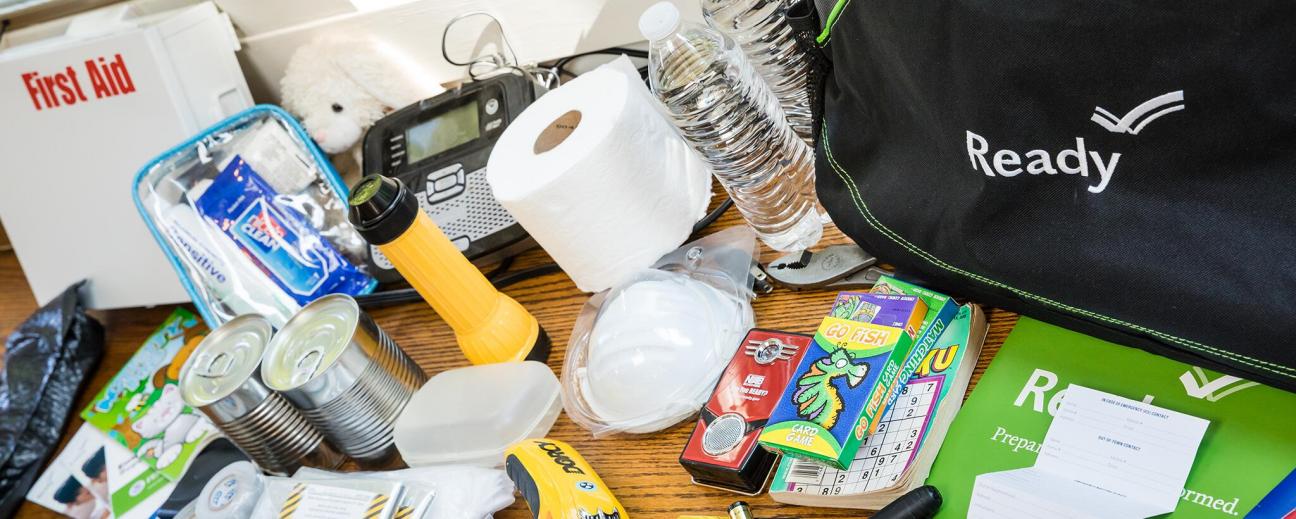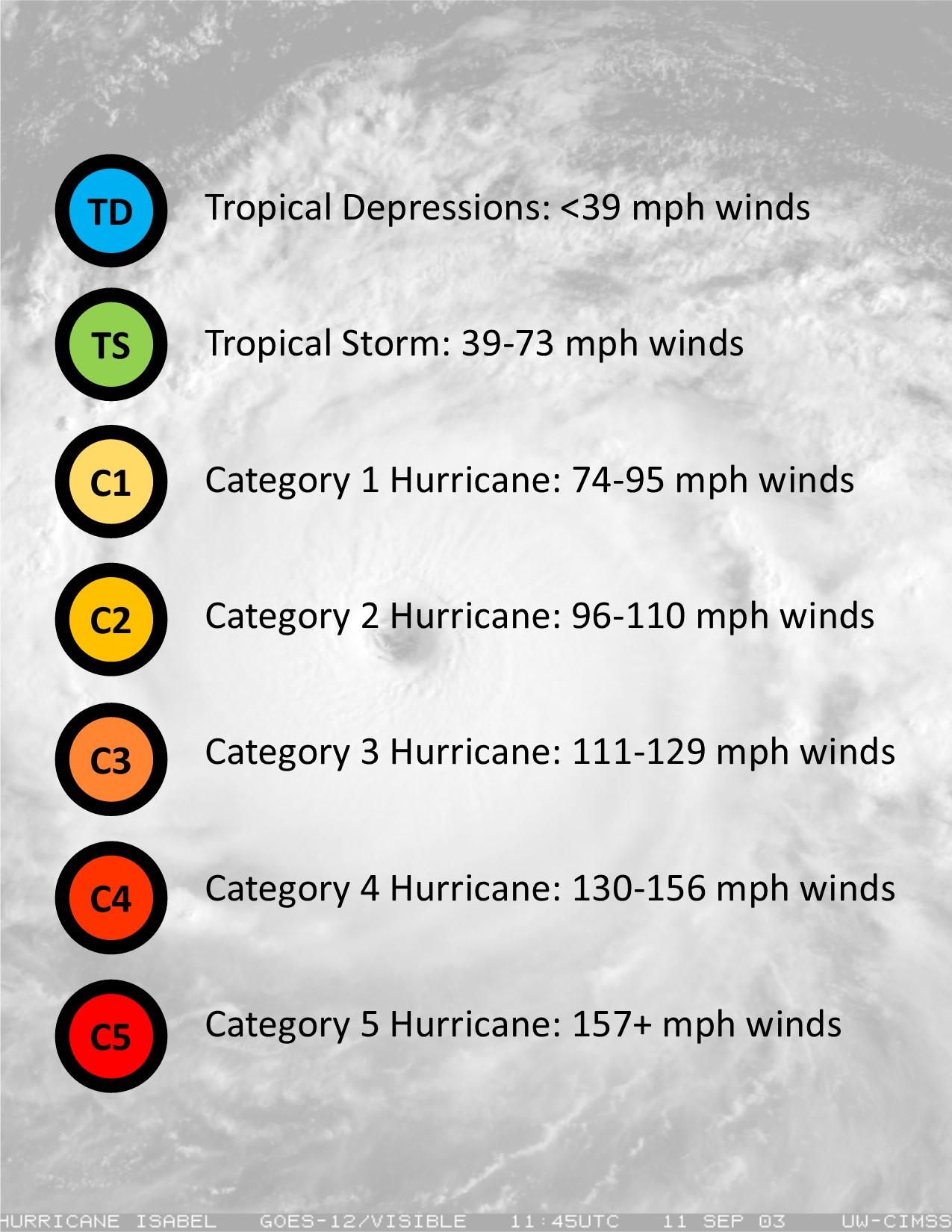Getting Prepared:
The first part of getting arranged is the materials you'll need to gather to create an emergency kit. A basic emergency supply kit should be stored in a water proof container, be easy to access, and could include the following recommended items:
- Water (one gallon per person per day for at least three days, for drinking and sanitation)
- Food (at least a three-day supply of non-perishable food)
- Battery-powered or hand crank radio and a NOAA Weather Radio with tone alert
- Flashlight
- First aid kitImage

- Extra batteries
- Whistle
- Dust mask
- Plastic sheeting and duct tape
- Moist towelettes, garbage bags and plastic ties
- Wrench or pliers (to turn off utilities)
- Manual can opener
- Local maps
- Cell phone with chargers and a backup battery
For more help on making or maintaining your emergency kit please visit the Ready.gov.
Make a Plan:
This is much easier and less time consuming than it seems. Pull out a map and highlighter and determine two or three destinations and the routes to get there. Alachua County residents can call 3-1-1 for shelter and storm information. They can also check out the Alachua County Emergency Management page for more preparedness tips, shelter information, and instruction on how to register for the emergency notification system Alert Alachua.
If your family includes children remember that these situations are frightening for adults, and can be traumatic for children. Your family may have to leave home and change your daily routine. Be prepared to give your children guidance that will help reduce their fears. The Red Cross has a great section on their website about how to prepare and talk to your children before, during, and after a disaster. They have even developed a fun and education app just for kids called Monster Guard.
Stay Informed:
There are several ways to stay informed before, during, and after a storm such as: watching the news, downloading and checking weather related apps or websites, or listening to a weather radio. Weather Underground has a section of their website dedicated to just hurricanes. There you can track current storms from all over the world. AccuWeather has a good site dedicated to current and past storms. There you can see activity and maps for any storm this season. The Weather Channel's Hurricane Central has a large library of hurricane related videos and news articles. Each of these sites mentioned have apps you can download for your Android or Apple devices.

-The word "hurricane" comes from the Mayan god of wind Hurakan.
-Typhoons are hurricanes that form in the Western Pacific Ocean, while Cyclones are hurricanes that form in the Indian Ocean.
-Each year there are only 21 regular hurricane names, names beginning with the letters Q, U, X, Y, and Z are not used. If more than 21 tropical storms or hurricanes are formed then the remaining storms are given names from the Greek alphabet, such as: Alpha, Beta, Gamma, etc.
-This year's names are Arthur, Bertha, Cristobal, Dolly, Edouard, Fay, Gonzalo, Hanna, Isaias, Josephine, Kyle, Laura, Marco, Nana, Omar, Paulette, Rene, Sally, Teddy, Vicky, and Wilfred.
-During even numbered years, such as 2020, men's names are given to the odd numbered storms and during odd numbered years, such as 2021, men's names are given to even numbered storms.
-Due to the earth's rotation, hurricanes north of the equator spin counterclockwise while hurricanes south of the equator spin clockwise.